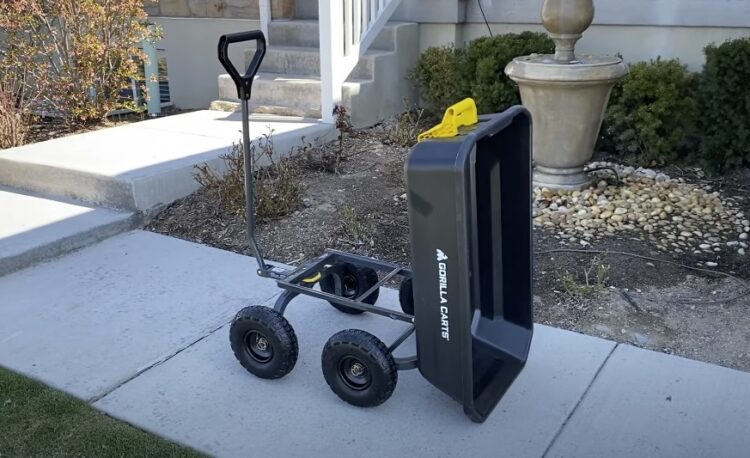Landscaping a slope on a budget may seem like a daunting task. The challenges of hillside gardening include erosion control, accessibility, and finding the right plants that can thrive on an incline. However, with some creativity and strategic planning, you can transform your sloping garden into a stunning and sustainable landscape without emptying your wallet. Whether you’re pondering over how much should I budget for landscaping or you’re ready to take on landscaping a hill on a budget, the following ideas can guide you to achieve your vision economically.
The Power of Groundcovers
Groundcovers serve as a natural and cost-efficient first line of defense against erosion. They offer various benefits:
- Soil Stabilization: Groundcovers create a mat of intertwined roots that act as a barrier against soil erosion, reducing the risk of landslides and washouts;
- Moisture Retention: The dense foliage of groundcovers shades the soil, preventing rapid evaporation and helping to retain moisture, especially in arid or hilly regions;
- Weed Suppression: By covering the soil’s surface, groundcovers limit the growth of weeds, reducing the need for time-consuming and expensive weed control measures;
- Aesthetic Appeal: Many groundcovers offer beautiful foliage or blooms, adding visual interest and enhancing the overall appearance of your landscape.
Now, let’s explore some excellent groundcover options suitable for hillside landscaping:
| Groundcover | Description |
| Creeping Junipers | These hardy and evergreen plants provide year-round interest with their attractive foliage. They are particularly effective in preventing erosion. |
| Vinca Minor | Known for its periwinkle blooms, Vinca Minor adds both beauty and practicality to your landscape. It forms a dense mat that stabilizes the soil. |
| Sedums | Succulent plants like sedums come in various colors and are drought-tolerant, making them an excellent choice for low-maintenance groundcovers. |
Tiered Planting: Maximizing Space and Minimizing Costs
Creating tiers or terraces in your hillside garden is an excellent strategy to reduce soil erosion and make efficient use of space. Terracing involves constructing a series of flat areas or steps on the slope, allowing for better control of water runoff and providing opportunities for various garden elements. Here are cost-effective ways to implement tiered planting:
- DIY Stone Walls: Stacking natural stones to create rustic retaining walls and planting beds is not only aesthetically pleasing but also cost-efficient. It provides structural stability to the slope and can be customized to fit your design preferences;
- Wooden Tiers: Using treated lumber to build retaining walls that double as planters is a practical choice. Wooden tiers are versatile and relatively inexpensive, making them a popular option for hillside landscaping;
- Recycled Tires: Consider painting and stacking old tires to create quirky and colorful terraced planters. This upcycling approach not only adds a unique touch to your garden but also helps reduce waste.
Native Plant Selection: Thrifty and Thriving

Selecting native plants for your hillside landscaping is a wise and budget-friendly choice. Native plants are naturally adapted to the local climate and soil conditions, which means they require less water, fewer fertilizers, and minimal care compared to non-native species. Here are some native plant options to consider:
- Wildflowers: Native wildflowers not only add vibrant colors to your landscape but also attract pollinators, contributing to biodiversity and a healthier ecosystem;
- Shrubs: Native shrubs offer structure and can be used as natural barriers, enhancing the aesthetics and functionality of your hillside garden while requiring minimal maintenance;
- Grasses: Native grasses have deep roots that help with soil stability. They are drought-resistant and can thrive with minimal care, making them ideal for erosion control.
Smart Mulching: Save Soil and Money
Mulching is a budget-friendly technique that plays a vital role in slope landscaping. It serves several purposes, such as retaining moisture, reducing weed growth, and preventing erosion. Consider these cost-effective mulching options:
- Leaf Mulch: Utilize fallen leaves as a natural and nutrient-rich mulch. This sustainable approach recycles organic matter from your garden and enriches the soil over time;
- Grass Clippings: After mowing your lawn, use the grass clippings as mulch on slopes. It’s a simple and cost-free way to improve soil quality while reducing the need for chemical fertilizers;
- Wood Chips: Check with local tree trimming companies for free or low-cost wood chips. These chips make an excellent mulch choice for slope stabilization, as they break down slowly and offer long-lasting benefits.
DIY Water Features: Low-Cost Luxury
Adding a water feature to your hillside garden can create a sense of tranquility and visual appeal. While water features can be expensive, there are budget-friendly options that involve using upcycled materials and a dash of creativity:
- Repurposed Barrels: Transform old barrels into a cascading fountain. This DIY project not only adds the soothing sound of running water but also serves as an eye-catching focal point in your garden;
- Salvaged Rocks: Build a natural-looking streambed using salvaged rocks. Incorporating natural elements seamlessly blends your water feature with the landscape, giving it a timeless and harmonious look;
- Recycled Glass Bottles: Consider using recycled glass bottles to create a reflective pond surface. This eco-friendly approach adds an element of creativity and intrigue to your garden, all while being budget-conscious.
Stepping Stones
Stepping stones are a cost-effective way to create pathways and steps in your garden. You can choose from cast concrete pavers or natural stones, both of which are durable and provide a visually appealing look. Here’s a breakdown of their benefits:
| Material | Description |
| Cast Concrete Pavers | These are readily available, inexpensive, and come in various shapes and sizes, allowing for creative designs. |
| Natural Stones | Natural stones, such as flagstone or slate, offer a rustic and timeless appearance. They can often be sourced locally for added affordability. |
- Gravel Paths: Gravel is an economical material choice for pathways in a sloped garden. It not only provides excellent drainage but also offers good traction for safe walking. Gravel paths are low-maintenance and can be easily adjusted or expanded as needed;
- Wood Chip Trails: For a rustic and budget-friendly path option, consider using wood chips. They can be spread over a weed barrier fabric to create a casual trail through your garden. Wood chip paths are ideal for a natural and relaxed aesthetic.
Upcycling Charm: Creative Reuse

Incorporating upcycled materials into your hillside landscaping design not only helps you save money but also adds a unique charm to your outdoor space. Here are some creative ways to reuse materials for a budget-friendly landscape:
- Old Tires: Repurpose old tires as planters or use them to create retaining walls. Their sturdy construction makes them suitable for both functional and decorative purposes in your garden;
- Discarded Bottles: Transform discarded bottles into edging for garden beds or pathways. This DIY project adds a touch of whimsy and sustainability to your landscape design;
- Repurposed Pallets: Craft old pallets into vertical planters, garden furniture, or even decorative accents. Pallets are versatile and can be adapted to various garden needs while minimizing waste.
Seasonal Color on a Shoestring
Adding seasonal plants to your hillside garden can provide a changing palette of colors throughout the year. To stay within budget, opt for perennial plants that return year after year, reducing the need for annual purchases. Here’s how to achieve seasonal color affordably:
- Spring Bulbs: Plant bulbs such as tulips, daffodils, and crocuses once, and enjoy years of vibrant spring blooms. Bulbs are a cost-effective way to welcome the arrival of spring;
- Summer Perennials: Choose heat-tolerant perennial plants for long-lasting summer color. Perennials require minimal maintenance and provide reliable blooms year after year;
- Fall Foliage: Incorporate shrubs and trees with vibrant autumn hues to add visual interest in the fall. Native trees and shrubs can offer beautiful foliage without straining your budget.
Efficient Irrigation: Cost-Effective Watering Solutions
Proper irrigation is crucial for the health of your hillside garden, but it can also be a potential budget challenge. To efficiently water your landscape without overspending, consider these cost-effective solutions:
- Drip Irrigation: Invest in a simple drip irrigation system that delivers water directly to the roots of your plants. Drip irrigation is efficient and minimizes water wastage;
- Rain Barrels: Collect rainwater using rain barrels during wet periods and use it to irrigate your garden during dry spells. This sustainable practice not only saves money but also conserves water resources;
- Deep Watering: Implement deep watering practices. Less frequent but thorough watering encourages deeper root growth, making your plants more resilient and reducing water consumption.
Low-Cost Lighting: Set the Mood without Spending a Fortune
Proper lighting can enhance the beauty of your hillside garden at night and create a welcoming ambiance. Opt for budget-friendly lighting options, such as solar-powered lights:
- Solar Path Lights: Illuminate walkways and pathways with solar path lights. They charge during the day and automatically light up at night, providing both safety and beauty;
- LED Spotlights: Use LED spotlights to highlight specific features in your garden, such as trees, sculptures, or architectural elements. LEDs are energy-efficient and have a long lifespan;
- Homemade Lanterns: Create a cozy atmosphere with homemade lanterns made from candles placed in mason jars or tin cans. These DIY lanterns add a personal touch to your garden without breaking the bank.
Maintenance: Protecting Your Investment for Free

Once your hillside landscaping is in place, proper maintenance is essential to ensure its longevity and prevent costly issues. Here are some cost-effective maintenance practices:
- Composting: Make your own compost using kitchen scraps and garden waste. Compost enriches the soil, reduces the need for chemical fertilizers, and promotes healthy plant growth;
- Pest Control: Implement natural pest control methods, such as introducing beneficial insects or using physical barriers like netting or row covers, to protect your garden from pests without resorting to expensive chemical treatments;
- Seasonal Clean-Up: Regularly remove debris, fallen leaves, and dead plant material to prevent disease and infestation. Proper cleanup is a proactive measure that saves you time and money in the long run.
Conclusion
Landscaping a slope on a budget is certainly within reach. With careful planning, a bit of creativity, and a willingness to put in some elbow grease, you can create a hillside landscape that is both breathtaking and budget-friendly. Remember that the initial investment in time and effort will pay off with a sustainable and beautiful garden that endures for years to come.
FAQs
Q: How can I start landscaping a slope if I have a very tight budget?
A: Begin with a plan that prioritizes the most critical issues, such as erosion control. Use groundcovers and repurposed materials for terracing to start, then gradually add elements as your budget allows.
Q: What’s the most cost-effective way to prevent erosion on a slope?
A: Planting a variety of groundcovers and installing terraces using repurposed materials are some of the most cost-effective methods for controlling erosion.
Q: How much should I budget for landscaping my hillside?
A: The budget can vary greatly depending on the size of the area and the materials you use. It’s possible to start with a few hundred dollars by using cuttings, seeds, and repurposed materials, and then reinvest as your garden grows.
Q: Can I do hillside landscaping on my own, or do I need to hire professionals?
A: Much of the work can be done on a DIY basis, especially if you’re willing to invest time and physical effort. However, for larger projects or those requiring heavy machinery, hiring professionals may be necessary.
Q: What are the best low-cost plants for a sunny slope?
A: Consider drought-tolerant native plants, such as sedums, wildflowers, and native grasses, which can handle the heat and require minimal watering.
Q: How do I maintain my landscaping through the seasons on a budget?
A: Choose perennial plants, make your own compost, collect seeds, and use natural methods for pest control. This reduces the need for seasonal spending.

